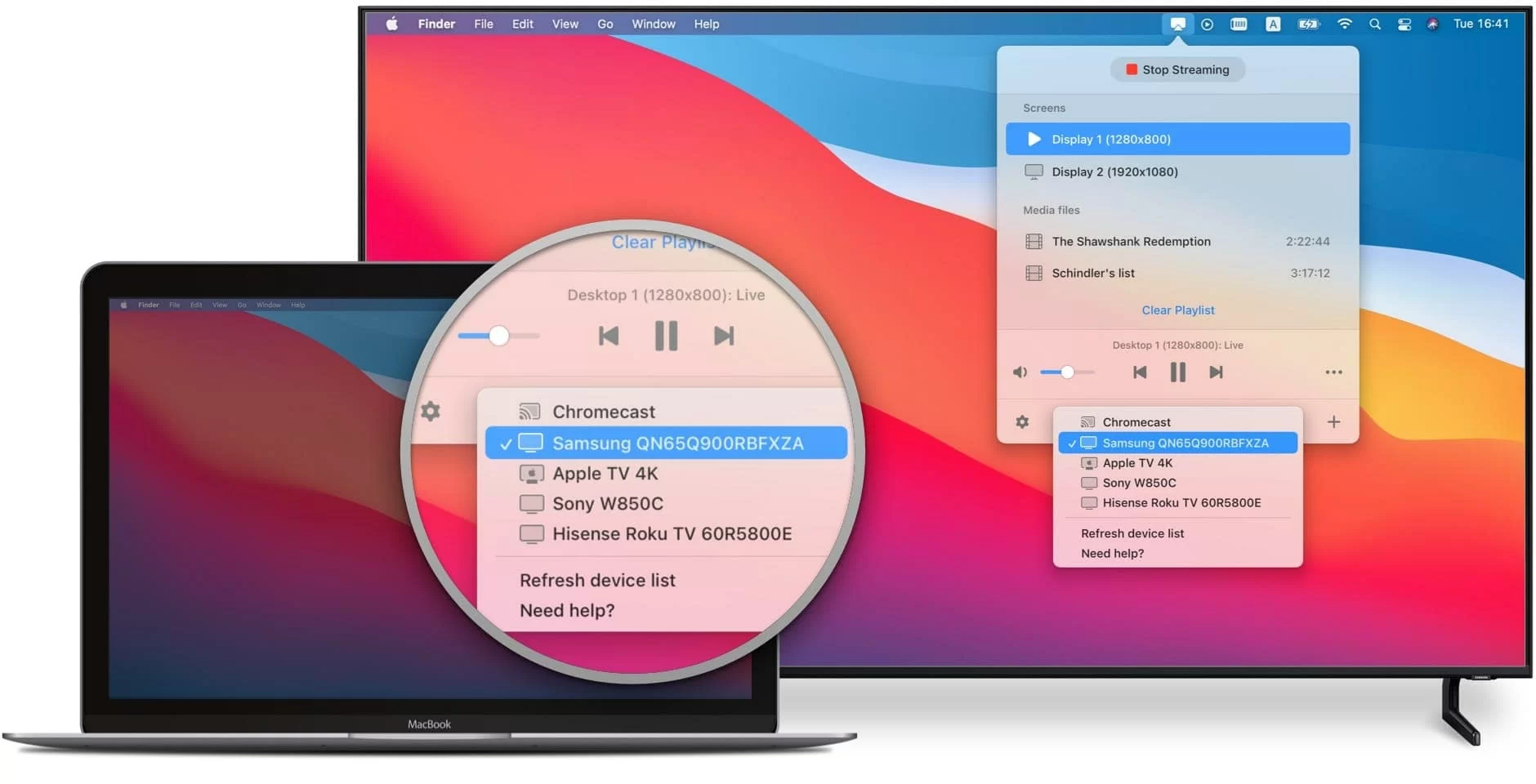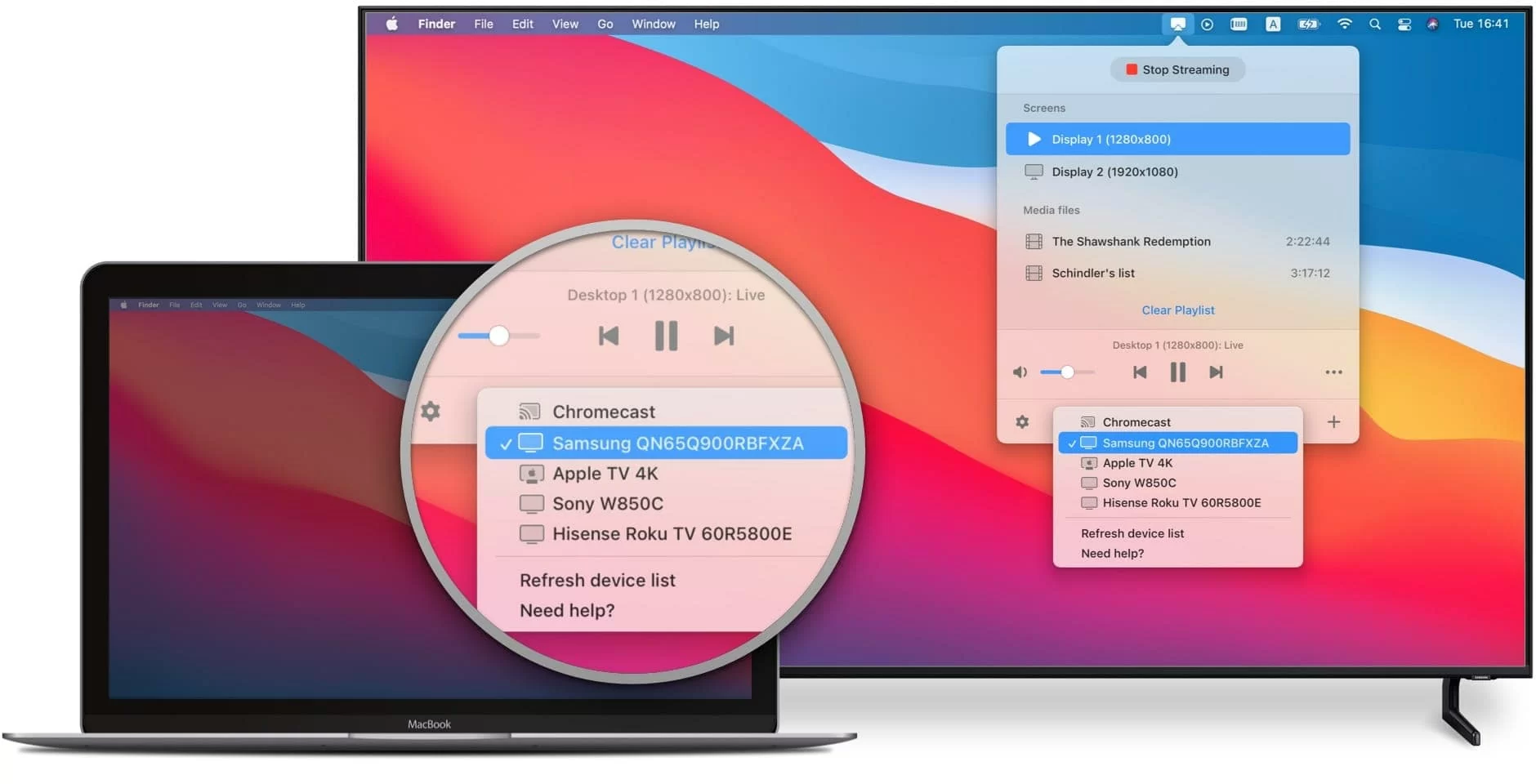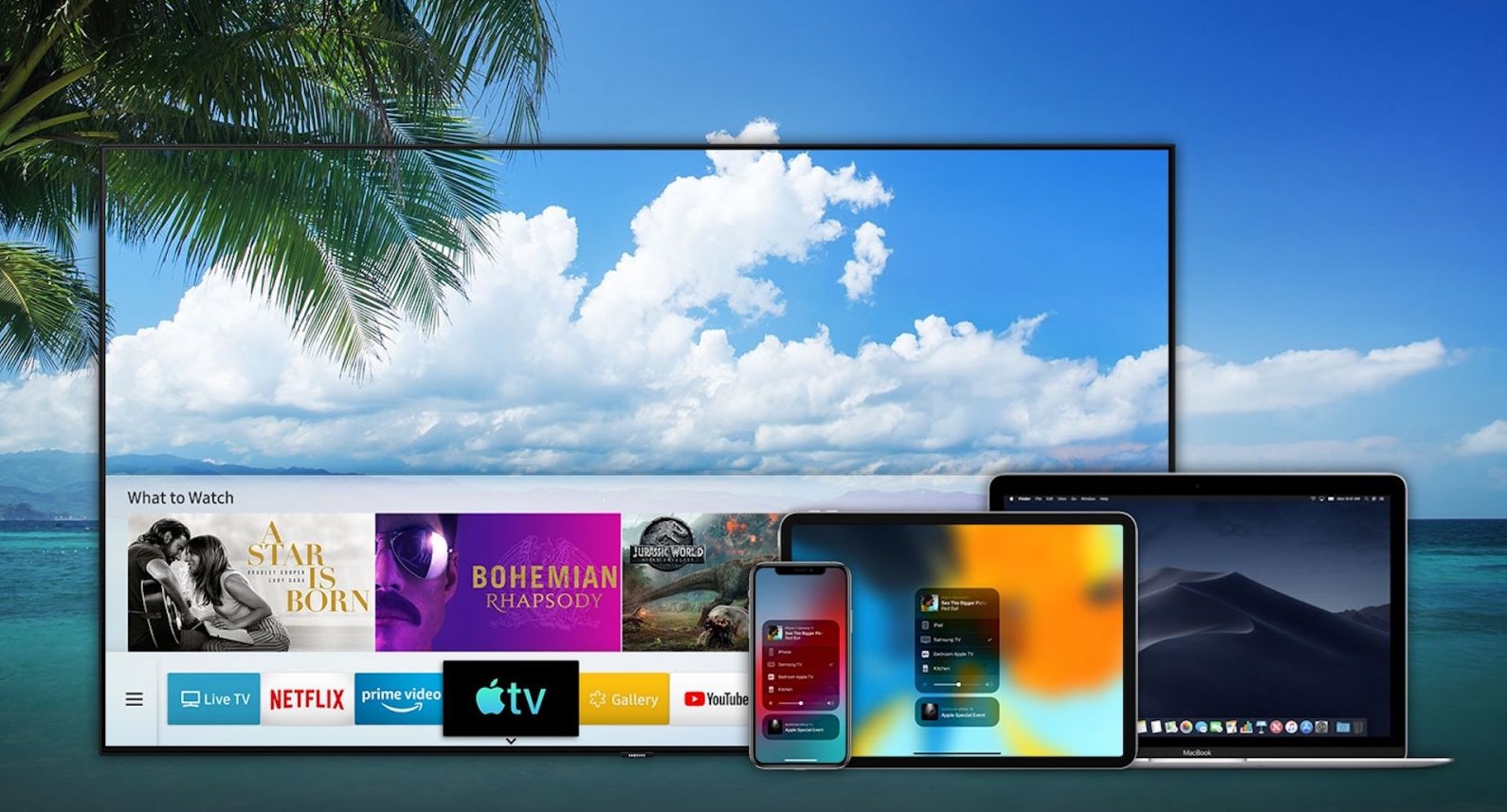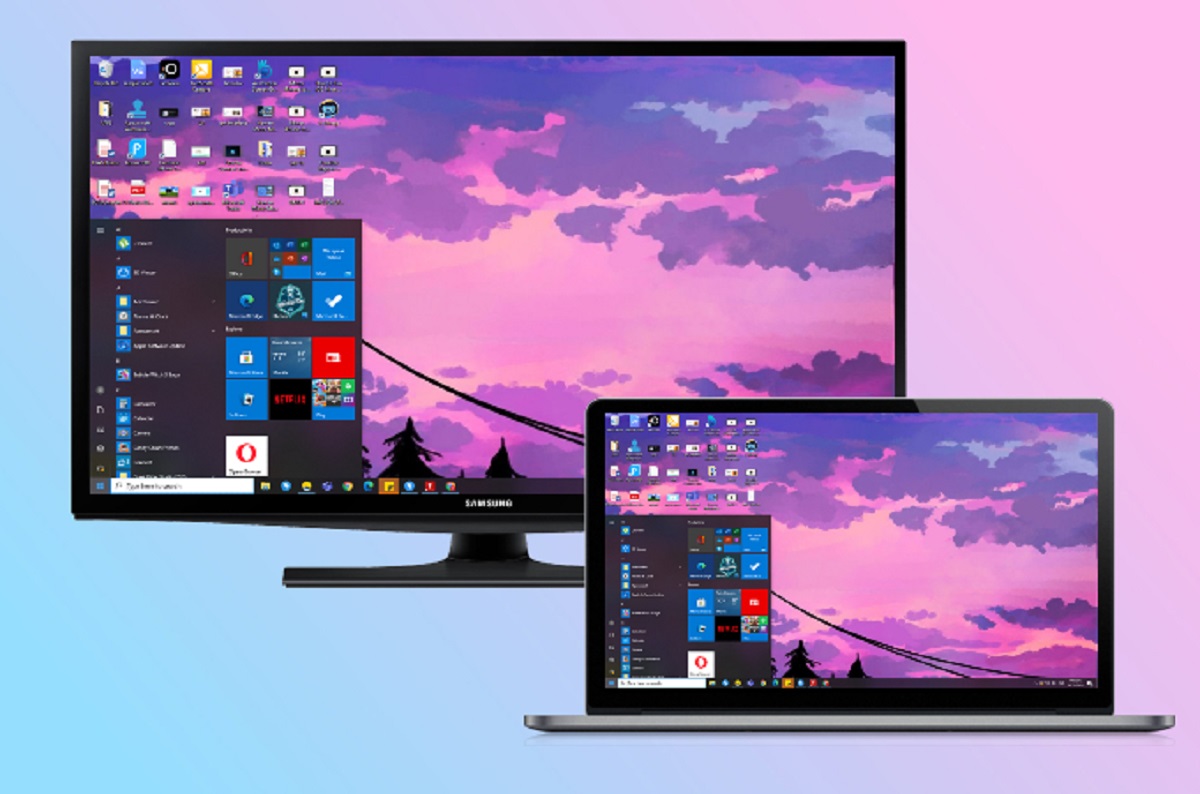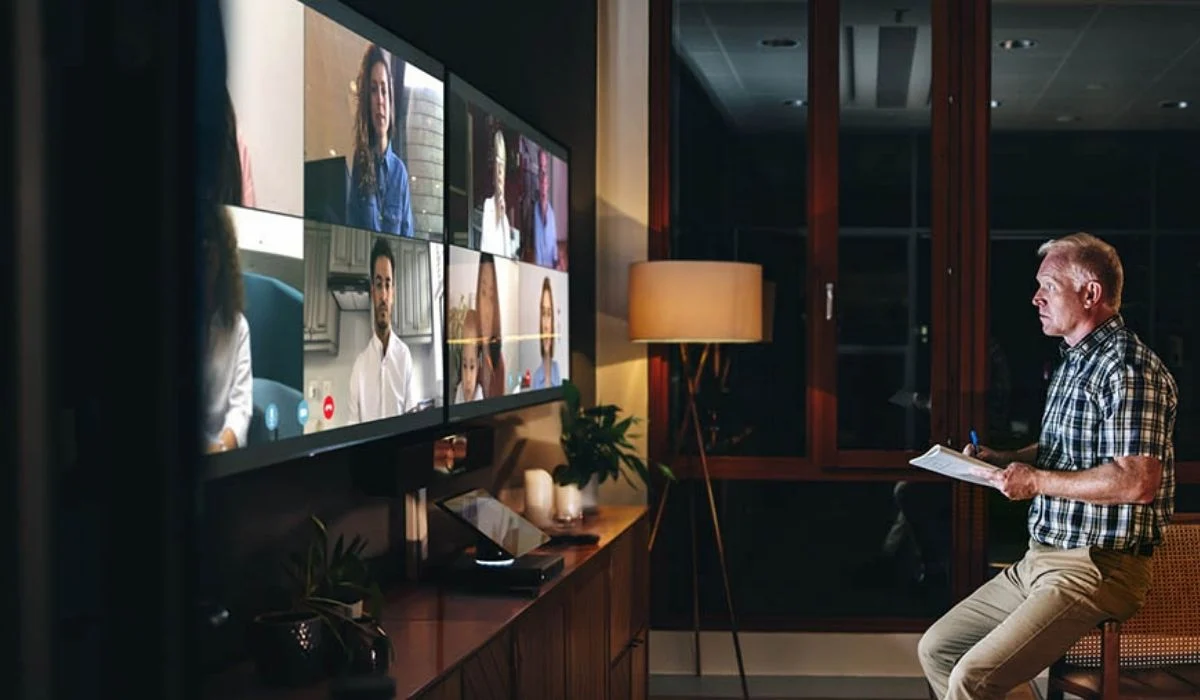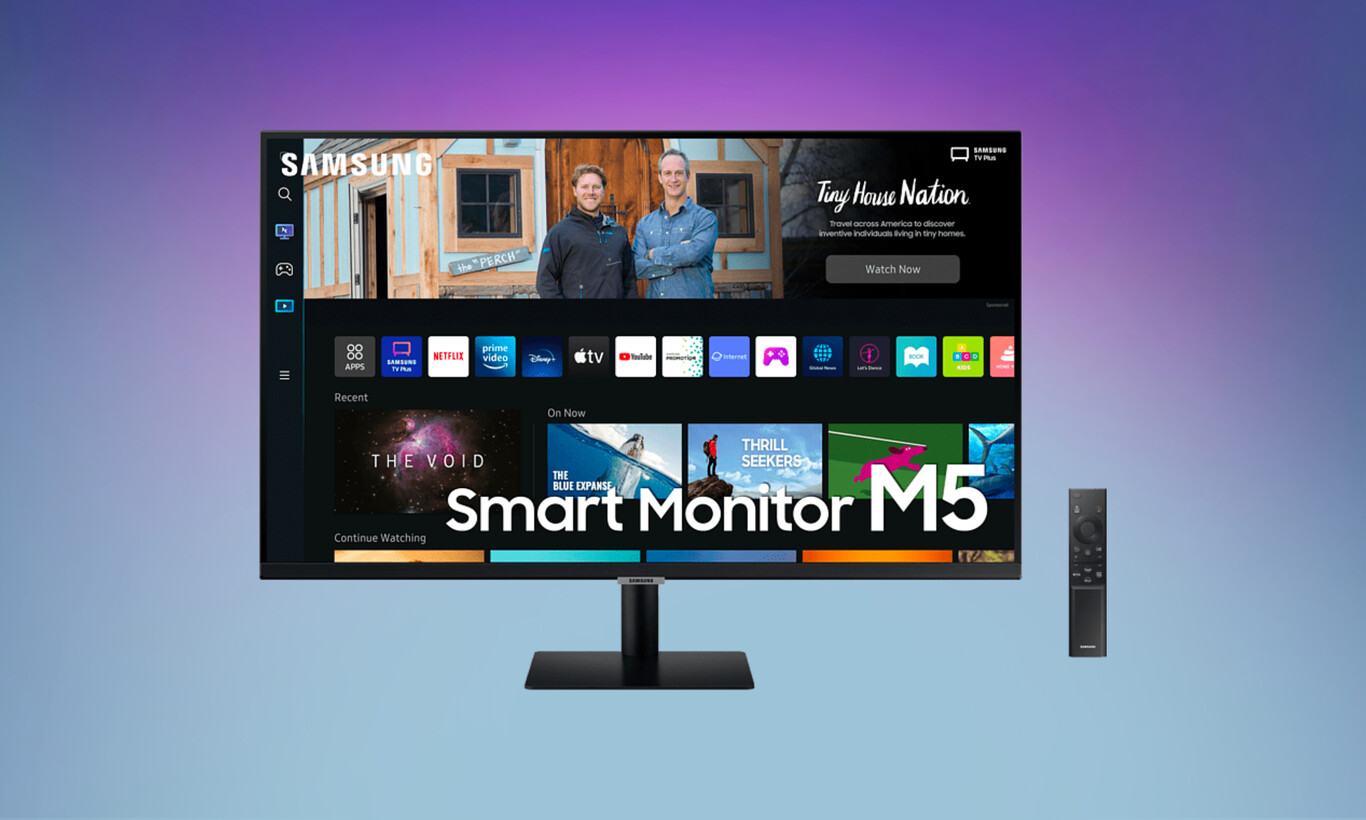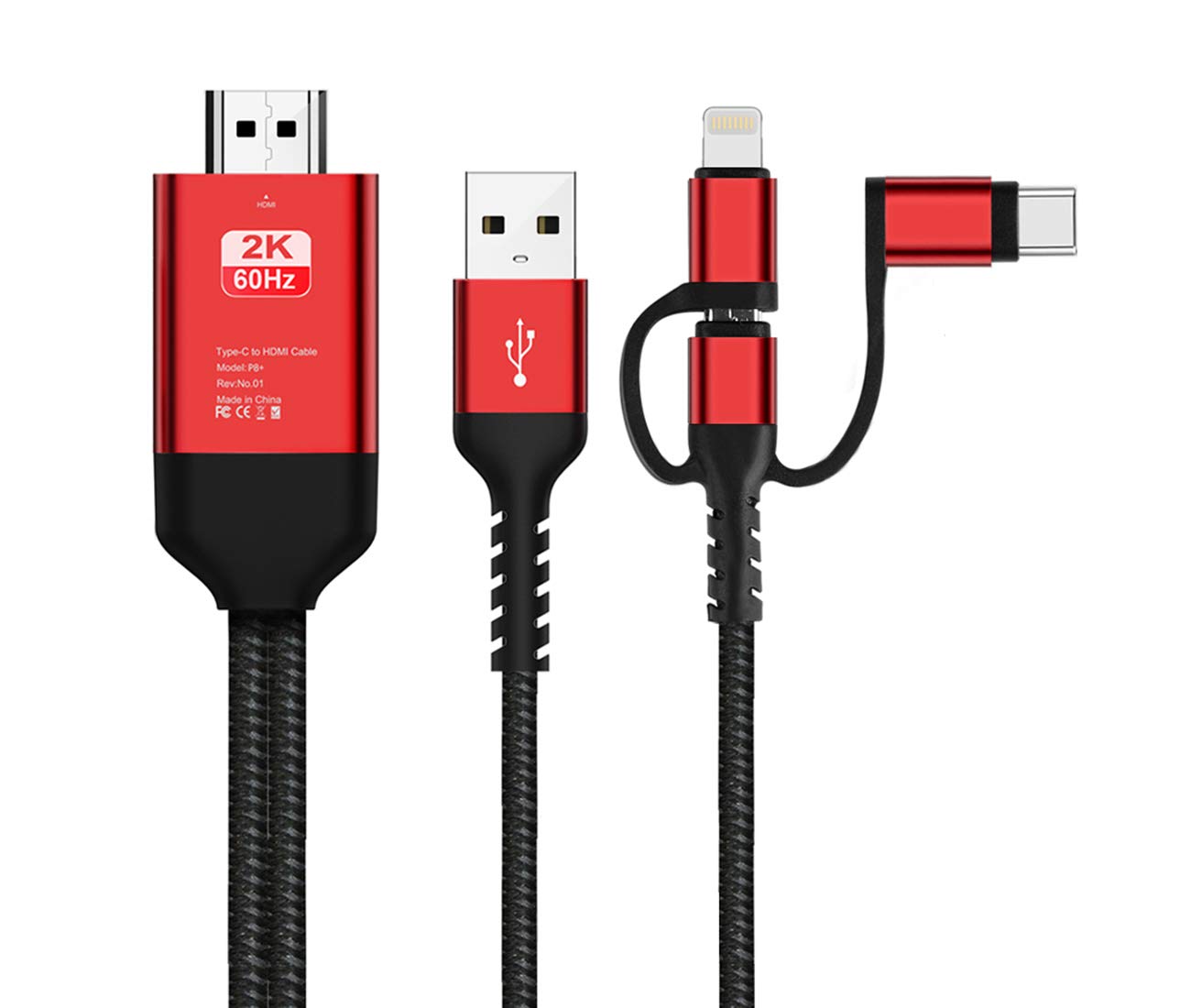Introduction
Connecting your MacBook to a Samsung Smart TV opens up a world of possibilities, allowing you to enjoy your favorite movies, TV shows, photos, and more on a larger screen. Whether you want to stream content, give a presentation, or simply enjoy a big-screen experience, connecting your MacBook to your Samsung Smart TV is a straightforward process.
Bear in mind that the method of connecting your MacBook to a Samsung Smart TV may vary depending on the model and age of your MacBook and the type of Samsung Smart TV you have. In this guide, we will walk you through the general steps to help you connect your MacBook to your Samsung Smart TV effortlessly.
Before we begin, it’s important to ensure that your MacBook and Samsung Smart TV are compatible. Most recent MacBooks offer HDMI ports, which is the easiest and most common way to connect your MacBook to a Samsung Smart TV. Some older MacBooks may require additional adapters or cables.
In this guide, we will focus on connecting your MacBook to a Samsung Smart TV using an HDMI cable. However, if your MacBook or Samsung Smart TV does not support HDMI connectivity, don’t worry! There are alternative methods available, such as using an Apple TV or connecting wirelessly through AirPlay or screen mirroring options.
Now that you understand the basics, let’s dive into the step-by-step process of connecting your MacBook to your Samsung Smart TV using an HDMI cable. Once connected, you will be able to enjoy a seamless and immersive viewing experience right from the comfort of your couch.
Step 1: Check your TV and MacBook compatibility
Before you begin the process of connecting your MacBook to your Samsung Smart TV, it’s essential to ensure that both devices are compatible. The compatibility will depend on the model and age of your MacBook and the specifications of your Samsung Smart TV.
Firstly, check your MacBook to see if it has an HDMI port. Most modern MacBooks come equipped with an HDMI port, which is the easiest and most convenient way to connect to a Samsung Smart TV. If your MacBook doesn’t have an HDMI port, it may require an adapter or a different type of cable.
Next, examine your Samsung Smart TV for available ports. Look for an HDMI port on the back, side, or bottom of the television. HDMI ports are commonly labeled as “HDMI” and can vary in number depending on the model. Ensure that your Samsung Smart TV has at least one available HDMI port for connecting to your MacBook.
Additionally, check the HDMI version compatibility between your MacBook and Samsung Smart TV. The HDMI version is indicated by a number (e.g., HDMI 1.4, HDMI 2.0, etc.). Ideally, both devices should have the same or compatible HDMI versions for optimal performance. However, most HDMI versions are backward compatible, meaning a newer HDMI version on your MacBook should work with an older HDMI version on your Samsung Smart TV.
It’s also worth noting that some MacBooks may require additional adapters or cables to connect to the HDMI port. For example, if your MacBook has a USB-C or Thunderbolt port, you may need to use a USB-C to HDMI adapter or a Thunderbolt to HDMI adapter to establish the connection.
To summarize, before proceeding with the connection, ensure that your MacBook has an HDMI port or the necessary adapters/cables, and your Samsung Smart TV has an available HDMI port. Confirm compatibility between the HDMI versions of both devices for the best possible connection and viewing experience.
Step 2: Connecting your MacBook to the Samsung Smart TV via HDMI cable
Once you have confirmed the compatibility between your MacBook and Samsung Smart TV, it’s time to physically connect the two devices using an HDMI cable. Follow these steps to establish the connection:
- Locate the HDMI port on your MacBook. It is usually found on the side or back of the device, labeled as “HDMI” or represented by an HDMI icon.
- Take one end of the HDMI cable and firmly plug it into the HDMI port on your MacBook.
- Now, locate the HDMI port on your Samsung Smart TV. The ports are typically located on the back or side of the TV, labeled as “HDMI” or marked with an HDMI icon.
- Take the other end of the HDMI cable and securely plug it into the HDMI port on your Samsung Smart TV.
- Once the HDMI cable is connected to both devices, ensure that the MacBook and Samsung Smart TV are powered on.
- On your Samsung Smart TV, use the TV remote to select the appropriate HDMI input. If you have multiple HDMI ports, use the input/source button on the remote to cycle through the options until you reach the correct HDMI input corresponding to the port used for the connection.
- After selecting the correct HDMI input on your Samsung Smart TV, you should see your MacBook’s screen displayed on the TV. If not, proceed to the next step to adjust the display settings on your MacBook.
Congratulations! You have successfully connected your MacBook to your Samsung Smart TV using an HDMI cable. The HDMI connection allows you to transmit both audio and video signals from the MacBook to the TV, providing you with a seamless and high-quality viewing experience.
Please note that some MacBooks may require additional steps to enable the video and audio output through the HDMI connection. Adjusting the display settings on your MacBook ensures that the content from your MacBook appears correctly on the Samsung Smart TV. Let’s move on to the next step to explore how to adjust these settings.
Step 3: Adjusting the display settings on your MacBook
After successfully connecting your MacBook to the Samsung Smart TV via HDMI cable, it is important to configure the display settings on your MacBook to ensure a smooth and optimized viewing experience. Follow these steps to adjust the display settings:
- On your MacBook, click on the Apple menu located on the top left corner of the screen and select “System Preferences.”
- In the System Preferences window, click on “Displays.”
- You will see the Display preferences window. Here, you can adjust various settings related to your MacBook’s display.
- Click on the “Arrangement” tab to view the arrangement of the displays connected to your MacBook.
- If you see multiple displays listed, ensure that the Samsung Smart TV, which appears as a separate display, is detected and arranged correctly as per your preference. You can drag and arrange the displays to match the physical setup. To make the Samsung Smart TV your main display, drag the white menu bar to it.
- Next, click on the “Color” tab to adjust the color settings of your MacBook’s display and the Samsung Smart TV.
- Here, you can adjust the brightness, contrast, and other color settings to match your visual preferences. You may need to experiment with these settings to achieve the desired viewing experience on your Samsung Smart TV.
- Once you have made the necessary adjustments, close the Display preferences window.
By adjusting the display settings on your MacBook, you can ensure that the content displayed on the Samsung Smart TV is accurate, vibrant, and visually appealing. Take some time to fine-tune the settings to achieve the best possible viewing experience.
Now that you have adjusted the display settings on your MacBook, let’s move on to the next step to enable screen mirroring and enjoy the content from your MacBook directly on the Samsung Smart TV.
Step 4: Enabling screen mirroring on your MacBook and Samsung Smart TV
Screen mirroring allows you to mirror the display of your MacBook onto your Samsung Smart TV wirelessly. This feature is especially useful when you want to share presentations, stream videos, or display photos on a larger screen. Follow these steps to enable screen mirroring between your MacBook and Samsung Smart TV:
- Ensure that both your MacBook and Samsung Smart TV are connected to the same Wi-Fi network.
- On your MacBook, click on the Apple menu and select “System Preferences.”
- In the System Preferences window, click on “Displays.”
- In the Displays preferences window, click on the “Arrangement” tab.
- Check the box that says “Mirror Displays.” This will mirror your MacBook’s screen onto the Samsung Smart TV.
- You may also see an option for “AirPlay Display” or “Connect to AirPlay Display.” Click on it, and your Samsung Smart TV should appear in the list of available devices.
- Select your Samsung Smart TV from the list to establish the screen mirroring connection.
Once the screen mirroring connection is established, the display from your MacBook will be mirrored on your Samsung Smart TV. You can now navigate through applications, play videos, or show presentations directly on your TV, with both audio and video streaming wirelessly.
It’s important to note that the screen mirroring feature may have slight differences or limitations depending on the model of your MacBook and Samsung Smart TV. Additionally, some MacBooks may use different terms like “AirPlay” instead of “Screen Mirroring.” You might need to consult the user manuals or online resources specific to your devices for more accurate steps.
Congratulations! You have successfully enabled screen mirroring between your MacBook and Samsung Smart TV. Now you can sit back, relax, and enjoy your favorite content on a bigger screen without the need for any cables.
If you encounter any difficulties or issues during the screen mirroring process, don’t worry. Let’s move on to the next step, where we will discuss common troubleshooting techniques to help you overcome these challenges.
Step 5: Troubleshooting common issues
While connecting your MacBook to a Samsung Smart TV is generally a straightforward process, you may encounter some common issues along the way. Here are a few troubleshooting tips to help you overcome these issues and ensure a smooth and seamless connection:
No display on the Samsung Smart TV
If you don’t see the MacBook’s display on your Samsung Smart TV, check the following:
- Ensure that both your MacBook and Samsung Smart TV are powered on.
- Confirm that the HDMI cable is securely plugged into both devices.
- Use the TV remote to select the correct HDMI input for the MacBook connection.
- Try using a different HDMI cable or test the current cable with another device to rule out any cable issues.
- Restart both your MacBook and Samsung Smart TV and try connecting again.
No audio on the Samsung Smart TV
If you have video but no audio on your Samsung Smart TV, try the following troubleshooting steps:
- Check the volume settings on both your MacBook and the Samsung Smart TV. Ensure that they are not muted or set to a very low volume.
- Try adjusting the audio output settings on your MacBook to ensure it’s set to the HDMI output.
- Restart both your MacBook and Samsung Smart TV, and then reconnect to see if the audio issue is resolved.
- Test the HDMI cable with another device to confirm that it’s not causing the audio problem.
Unstable or laggy screen mirroring
If you experience a laggy or unstable screen mirroring connection, the following steps may help:
- Ensure that both your MacBook and Samsung Smart TV are connected to the same Wi-Fi network, as a weak or unstable network can affect screen mirroring performance.
- Reduce the distance between your MacBook and the Wi-Fi router to improve the signal strength.
- Close unnecessary applications or processes on your MacBook to free up system resources and improve performance.
- Try restarting your Wi-Fi router, MacBook, and Samsung Smart TV to reset the network connection.
- Update the software on your MacBook and Samsung Smart TV to the latest versions, as software updates often include performance improvements and bug fixes.
If you continue to experience issues or encounter other specific problems during the connection process, consult the user manuals for your MacBook and Samsung Smart TV or seek assistance from their respective customer support channels for further troubleshooting guidance.
With these troubleshooting steps, you can overcome common issues and ensure a smooth and enjoyable experience when connecting your MacBook to a Samsung Smart TV.
Conclusion
Connecting your MacBook to a Samsung Smart TV opens up a world of possibilities, allowing you to enjoy your favorite content on a larger screen. By following the steps outlined in this guide, you can easily connect your MacBook to your Samsung Smart TV via an HDMI cable, adjust the display settings, enable screen mirroring, and troubleshoot common issues that may arise.
Remember to check the compatibility between your MacBook and Samsung Smart TV before starting the connection process. Ensure that both devices have compatible HDMI ports and, if necessary, the appropriate adapters or cables. Adjust the display settings on your MacBook to optimize the visual experience on the Samsung Smart TV. Enable screen mirroring for a wireless connection and enjoy your favorite movies, videos, or presentations on the big screen.
In case you encounter any difficulties during the process, refer back to the troubleshooting section for helpful tips. Keep in mind that specific MacBook and Samsung Smart TV models may have slight variations in the steps and terminology used. Always consult the user manuals or online resources specific to your devices for accurate information.
Now that you have successfully connected your MacBook to your Samsung Smart TV, you can immerse yourself in a larger-than-life viewing experience. Whether you’re streaming movies, giving a presentation, or simply enjoying a slideshow of your favorite photos, the connection between your MacBook and Samsung Smart TV allows you to elevate your entertainment and productivity.
So, grab your popcorn, sit back, relax, and enjoy the seamless and immersive entertainment experience with your MacBook and Samsung Smart TV connection.









